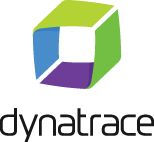|
Java-Based Microservices: Understanding the Benefits and Boundaries for Your Application Structure Date: This event took place live on March 15 2016 Presented by: Asad Ali Duration: Approximately 60 minutes. Questions? Please send email to Description:In today's digital landscape, the ability to scale an application up and down based upon the transaction load makes microservices an ideal architectural style. However, there are pros and cons with implementing this architecture, especially as it relates to the Producer Consumer design pattern. This pattern is a classic concurrency or threading pattern that reduces coupling between the Producer and Consumer by separating identification of work with execution of work. And while this pattern allows for rapid application scaling and may look to be an ideal fit for migrating to microservices, care has to be taken when choosing the queuing model in relation to its impact on performance. In this webcast, we will look into ways to optimize Java application code that uses the Producer Consumer design pattern by showcasing real-world examples from our own experience with Dynatrace server code. You'll walk away from this discussion with specific ideas, guidelines, and techniques you can start using right away to architect your Java applications for improved modularity. About Asad Ali, Director, Product Specialist — DynatraceAsad is a technical product evangelist with over 15 years of experience in Object-oriented programming, databases and scripting languages. His vast expertise includes application performance for Java, .NET, containers, and mobile. Asad leads a team of technical resources for the Dynatrace application monitoring product. His mission is to extend and enhance Dynatrace application monitoring capabilities to help adoption of the product in large scale deployment. |
|
|
|


